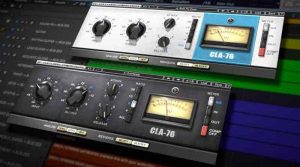

If anything, I found it pleasing as it reminded me of days spent behind an analog console. I should emphasize that this hum emulation is very subtle in both cases overall, and you certainly would not find it distracting should you choose to leave the analog section engaged. Conversely, the 50-60 Hz hum is virtually inaudible in “Blackie.” “Bluey” distorts more easily than its counterpart, yet has a lower level of hiss than “Blackie” when the analog section is engaged. The major differences between the two compressors are most easily perceived in levels of distortion and noise. Waves also adds analog noise and hum, which can be bypassed completely or set to create hiss and a very low level DC hum at either 50 or 60 Hz and depending on your nationality I suppose, you may find one or the other more familiar. They offer the same familiar interface with input and output levels, variable attack and release times, compression ratio (4:1, 8:1, 12:1, 20:1, ALL), metering preferences, and a compression bypass switch.

Waves offers two flavors of the same compressor topology in this plug-in: “Bluey,” based on an earlier (blue-stripe revision b) version of the 1176, and “Blackie,” based on the later revision D-LN iteration of the same model. Both are exact models of two of Chris Lord-Alge’s favorite units.

Additionally, there are very CPU friendly and can be used liberally without too much concern for processing power. They behave as you expect the original hardware models to, and offer excellent emulations of the overt eccentricities that engineers have always found so appealing about them. With that said, over the last couple of months I’ve been fortunate enough to add these plug-ins to my ever-expanding arsenal of vintage emulations and I must say that these have become some of my favorite tools to use. It sounds complex, and is, but thankfully, better heads than mine are developing this software, and so I am left to just twist the knobs and enjoy the results.
#Cla 2a vs 3a full#
Once this data is collected, it is then fed into a complex harmonic distortion algorithm that can interpolate those unique response characteristics across the full dynamic range of the unit. Obviously, given the continuously variable nature of a piece of analog hardware, a tremendous amount of data can be generated running different types of signal through a hardware unit, and not all of it can be reproduced. However, as a user will not typically employ the full dynamic range of a unit, it is easier to model a “sweet-spot,” or a set scale of amplitudes. Waves goes to great lengths to model these distortions and idiosyncrasies in a way that is both convincing and CPU friendly.

In collaboration with the luminary engineer and mixer Chris Lord-Alge, Waves has modeled four of his personal go-to compressors: Within the last few years, we’ve seen them introduce emulations of the de-facto API, SSL, and Neve analog pieces that engineers and producers have used for decades.Ĭontinuing that trend Waves has recently introduced two new lines of classic emulations: Of late, Waves has shifted a lot of attention towards the trend of modeling classic analog gear. Many of the Waves plug-ins have become modern classics in their own right. Personally, I’m always on the lookout for new plug-ins or virtual instruments that will give the end listener as much of an organic and analog aural experience as possible.Īny modern engineer is of course familiar with Waves who have been at the forefront of plug-in design from the very beginning of the DAW age. As the necessary adaptations and skills for producing and mixing in the box have become more and more ubiquitous, users are looking for more unique digital tools which carry over the unique sonic personalities of their analog counterparts.


 0 kommentar(er)
0 kommentar(er)
